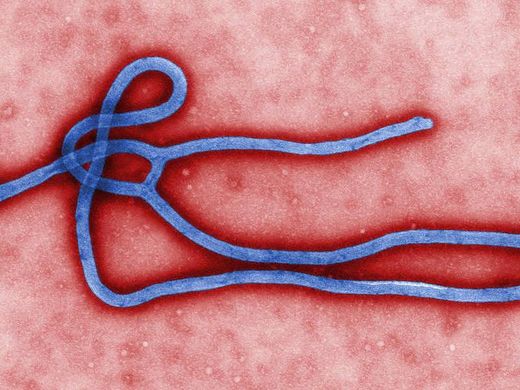
© dpa
1. So far, nearly
2,500 suspected cases have been reported in what the WHO says is the worst known outbreak of the disease. However, the WHO's website says the survival rate for people with Ebola in this outbreak has been
47%, which is a substantial improvement over the disease's survival rate, historically.
2. There is a 47% survival rate with this outbreak.
3.
Approximately 300 infected patients have survived Ebola treatment in Liberia since the outbreak here from March to September, Assistant Health Minister for Preventive Services, Tolbert Nyenswah, has announced.
The above
comment (#1) is from an August 26 media report noting that 47% of Ebola cases in the current outbreak survive, in spite of the fact it is the worst known outbreak of Ebola. The same figure is
currently cited on the Canadian Infection Prevention and Control site on Ebola (#2).
This survival number is from the
WHO Ebola website, which had listed three bold headings characterizing Ebola in the current outbreak. The first headline, "H2H" reflected the fact that virtually all cases were due to human to human transmission. The second headline "2 to 21 days" reflect the wide range of reported incubation times. The third headline "47% survive" was followed by a claim that the survival rate was higher than most prior outbreaks (this headline was removed last week).
A link to the
prior outbreaks list (by WHO) was provided, and the corresponding 53% CFR (case fatality rate) was lower than any of the 8 largest Zaire strain outbreaks (more than 50 cases each),
which had CFR's ranging from 60%-90%. Moreover, the 53% matched the two Sudan outbreaks (Sudan in 1976 and Uganda in 2000), and only the two Bundibugy outbreaks (51% for DR Congo in 2012 and 25% for Uganda in 2007) had a lower CFR.
However, the CFRs for the prior outbreaks were
based on outcomes (all reported cases had either died or had recovered), while the 47% survival used by WHO in the current outbreak represented cases who had recovered,
as well as those hospitalized, those housed at holding centers, and those who had been sent home because all beds at hospitals and holding centers were full.
Thus, the 47% survival rate would only be accurate if all of the live patients who had not been discharged subsequently recovered, for which there was no scientific or historic basis.As seen above (#3),
less than 300 cases in Liberia have survived, based on the
September 18 comment by the Assistant Health Minister in Liberia. The
September 17 report from the Liberia Ministry of Health cited 3022 cases and 1578 deaths in Liberia (which were also cited in the latest
WHO Road Map). Thus,
although Liberia reported 1444 live Ebola cases as of September 17, less than 300 represented recovered cases. The more than 1144 active live cases included approximately 300 in hospitals receiving treatment and less than 100 in holding centers. Thus, more than 744 cases had been identified as Ebola cases, but had been sent home because all available beds were full.
The Ebola CFR based on outcomes (1578 deaths and 300 recovered cases) is 84% (1578/1878), which is
among the highest reported Ebola CFRs (only the 90% for the 2003 outbreak and the 88% for the 1976 outbreaks in the DR Congo were higher).
The low frequency of recovered cases among the live Ebola cases in Liberia highlights the problems associated with the lack of beds. Most of the identified cases are in the community, posing a threat of further spread. Moreover,
WHO has estimated that the true number of Ebola cases is 2-4 times the reported numbers, suggesting 1000-3000 additional cases were not being treated and were further spreading the virus in Liberia, in addition to such cases in Sierra Leone and possibly Guinea.
The absence of reports on recovered Ebola cases in WHO reports is glaring. Although they have removed the claim of a 47% survival rate from their website, the number of recovered cases should be include in updates, including road map reports.
It looks to me that if you are not dead you have a higher chance of recovery than if you are! 84% is therefore too high as well as 47% being too low. It will work out as something like 67%+/-10% when (if) all outcomes are known. You have perhaps a 1in 3 chance, higher if you get some medical care. Even with basic treatment 50% might well be optimistic.